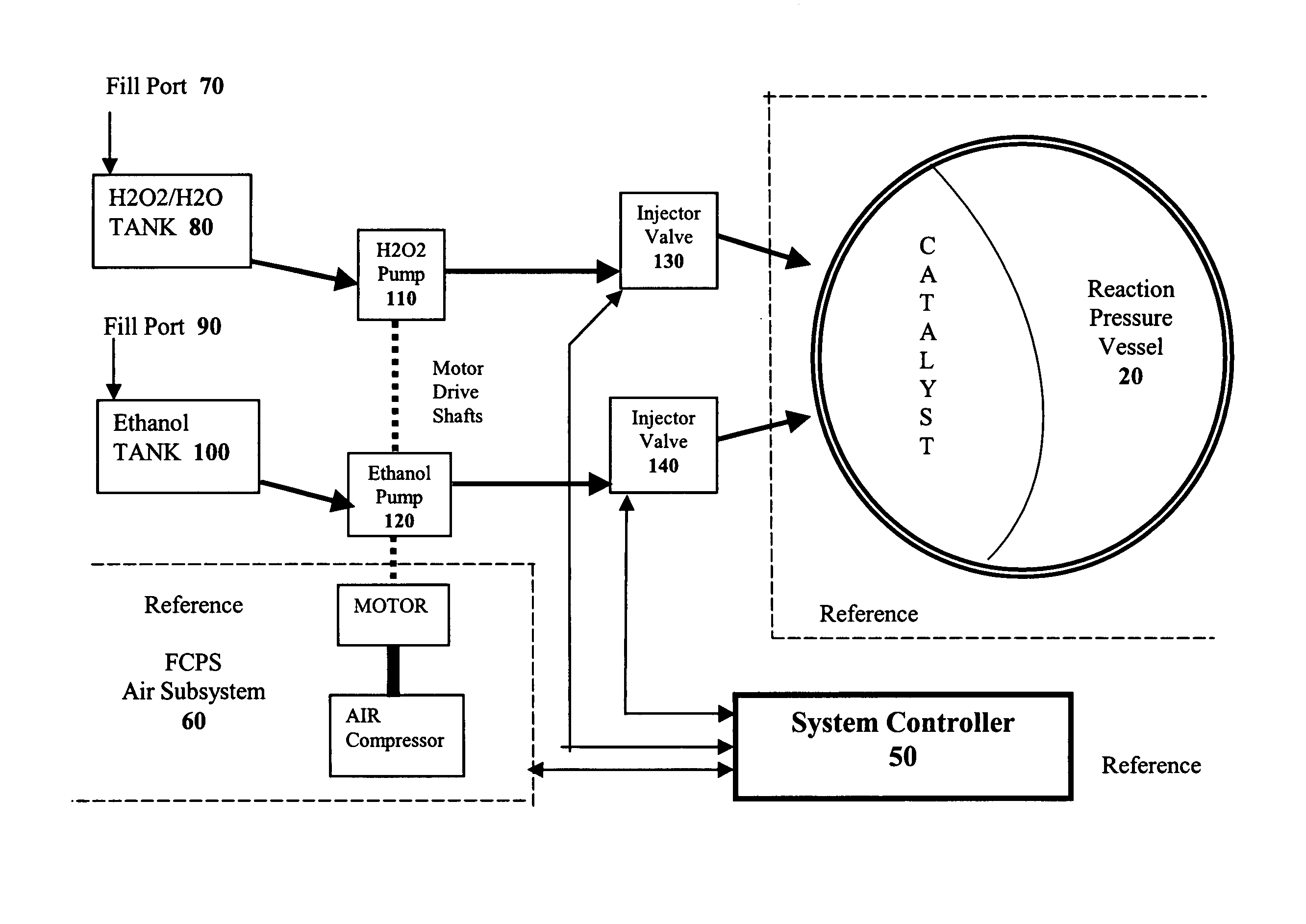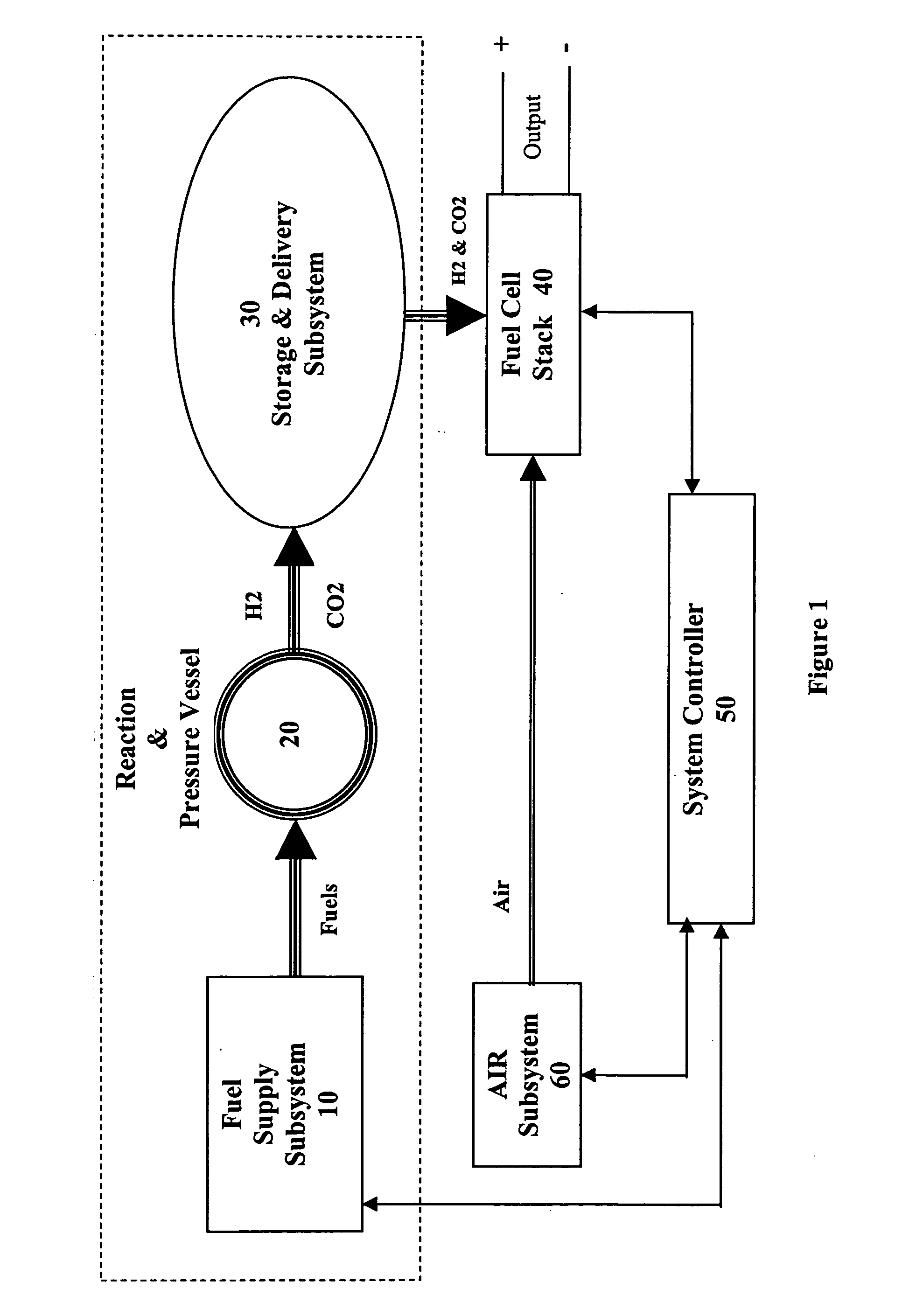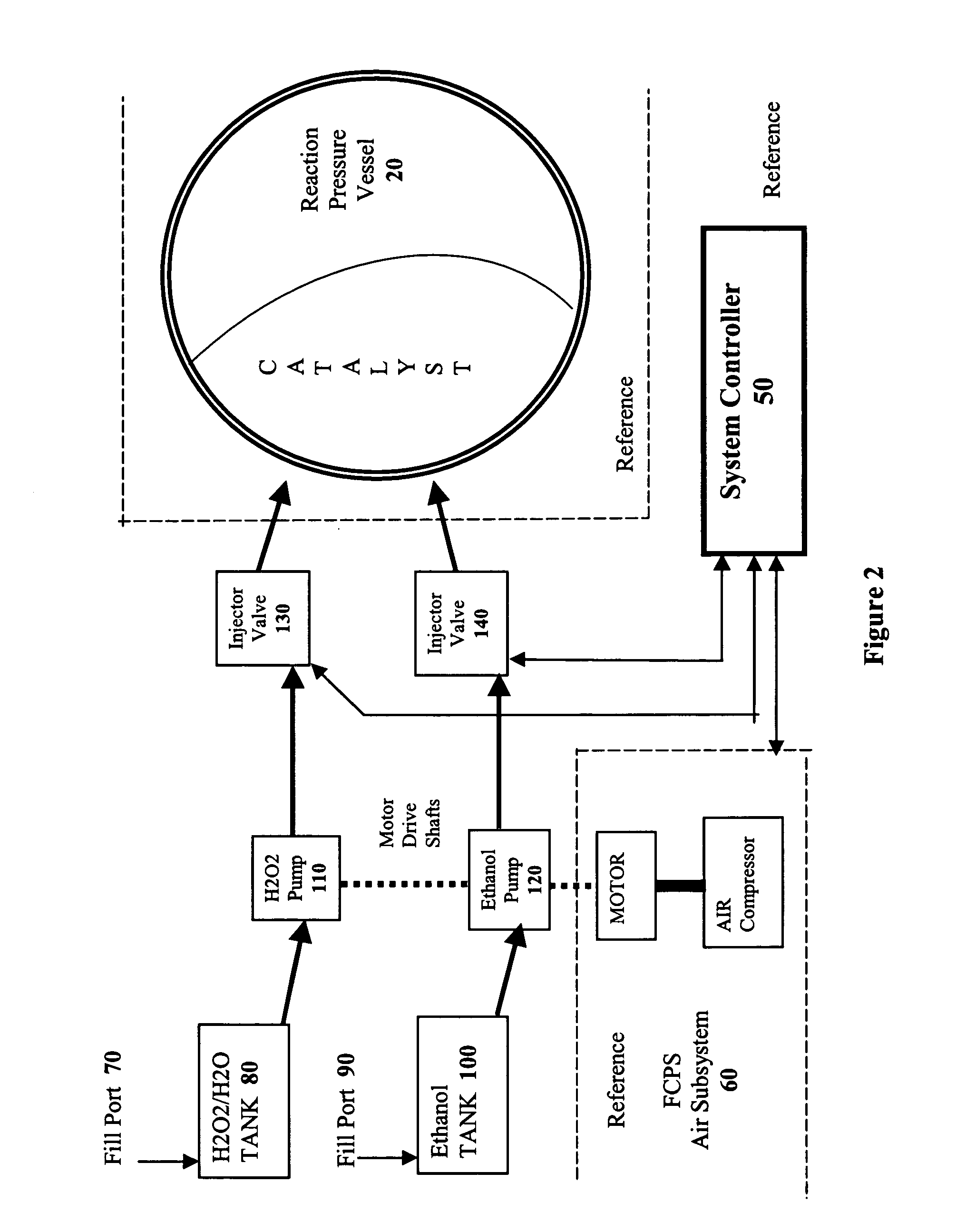Hypergolic hydrogen generation system for fuel cell power plants
a fuel cell and hydrogen generation technology, applied in electrochemical generators, oxygen/ozone/oxide/hydroxide, chemical production, etc., can solve the problems of reducing the efficiency of the fuel cell power supply, the quantity of carbon monoxide (co) present, and the poisonousness of the pem fuel cell, so as to reduce the formation
- Summary
- Abstract
- Description
- Claims
- Application Information
AI Technical Summary
Benefits of technology
Problems solved by technology
Method used
Image
Examples
Embodiment Construction
The present invention takes advantage of the hypergolic reactive nature of concentrated hydrogen peroxide when combined with hydrocarbon fuels in an appropriate stoichiometric ratio to produce carbon dioxide and hydrogen. By combining the fuels in a pressure vessel containing a catalyst that encourages the formation of CO2, hydrogen gas is formed which can then be used to power a fuel cell.
If simple hydrocarbons such as methane, methanol, or ethanol are combined with H2O2 in the absence of air, the respective chemical reactions are:
H2O2+CH4O→CO2+3H2 (Reaction 1)
H2O2+2CH3OH→2CO2+5H2 (Reaction 2)
H2O2+C2H5OH+H2O→2CO2+5H2 (Reaction 3)
As shown in Reaction 3, if water is added to the ethanol / H2O2 reaction, the yield is the same as the methanol / H2O2 reaction. Because ethanol is miscible with water, and readily available as a liquid, it is the preferred hydrocarbon source for the methods of the present invention, although one of skill in the art will readily appreciate that other...
PUM
| Property | Measurement | Unit |
|---|---|---|
| pressure | aaaaa | aaaaa |
| pressure | aaaaa | aaaaa |
| temperature | aaaaa | aaaaa |
Abstract
Description
Claims
Application Information
 Login to View More
Login to View More - R&D
- Intellectual Property
- Life Sciences
- Materials
- Tech Scout
- Unparalleled Data Quality
- Higher Quality Content
- 60% Fewer Hallucinations
Browse by: Latest US Patents, China's latest patents, Technical Efficacy Thesaurus, Application Domain, Technology Topic, Popular Technical Reports.
© 2025 PatSnap. All rights reserved.Legal|Privacy policy|Modern Slavery Act Transparency Statement|Sitemap|About US| Contact US: help@patsnap.com



